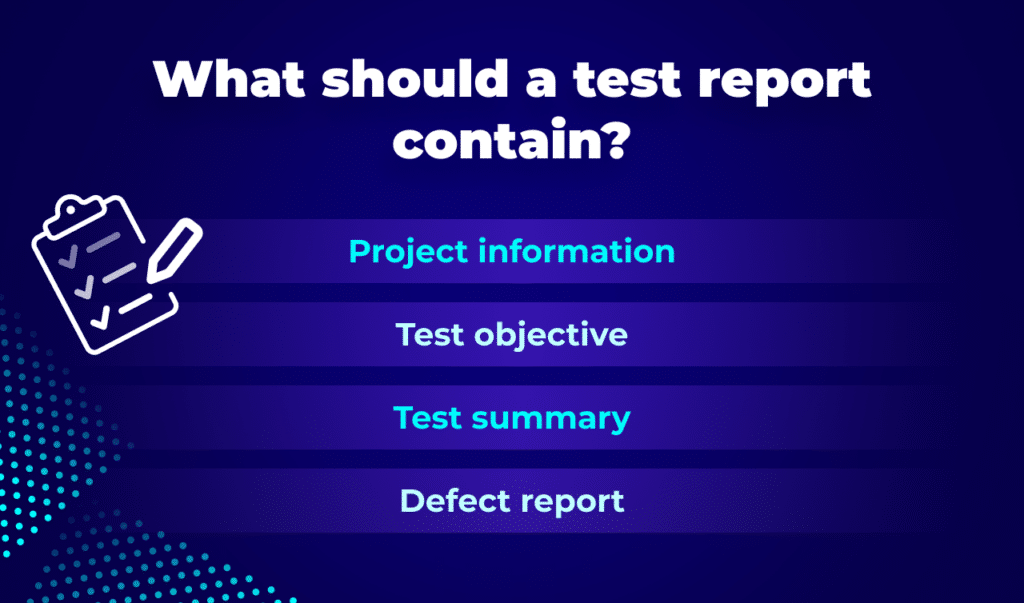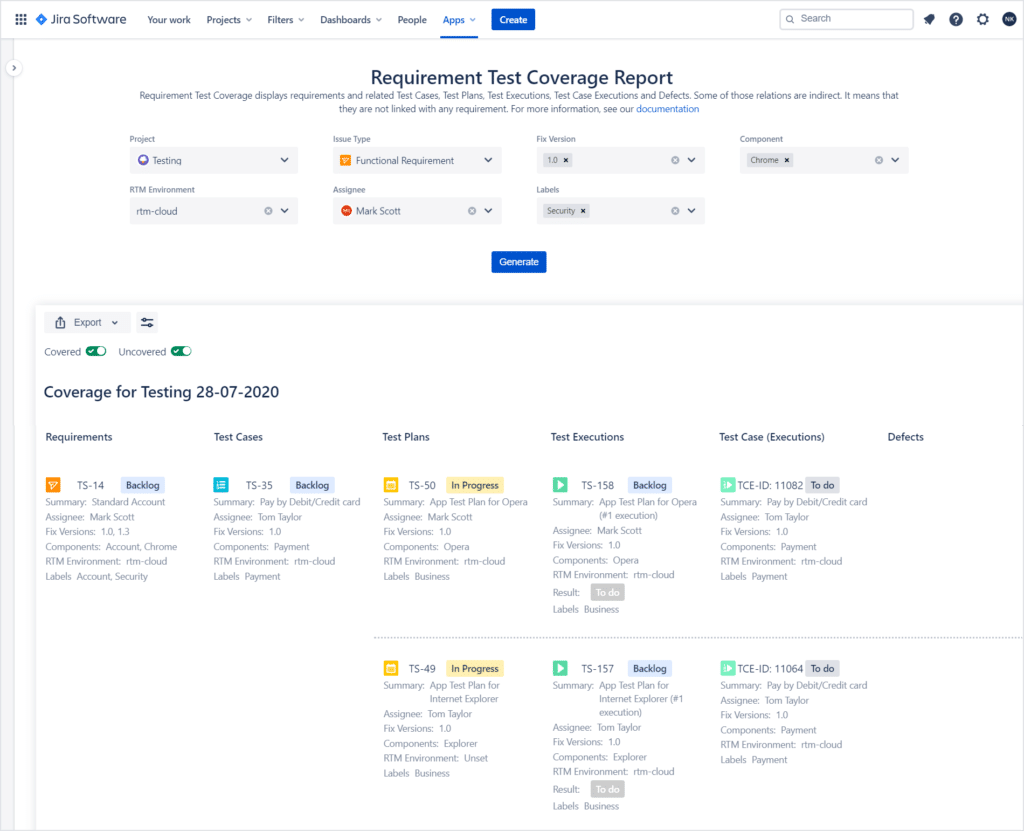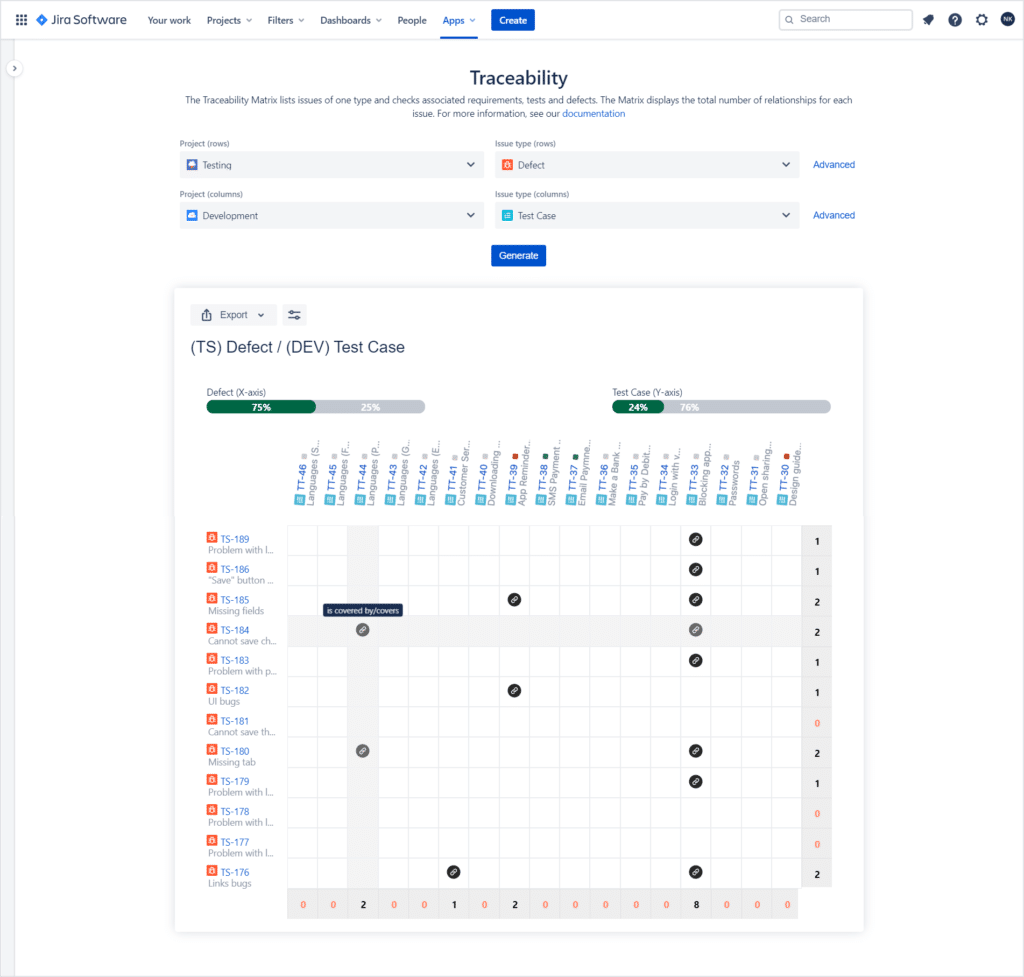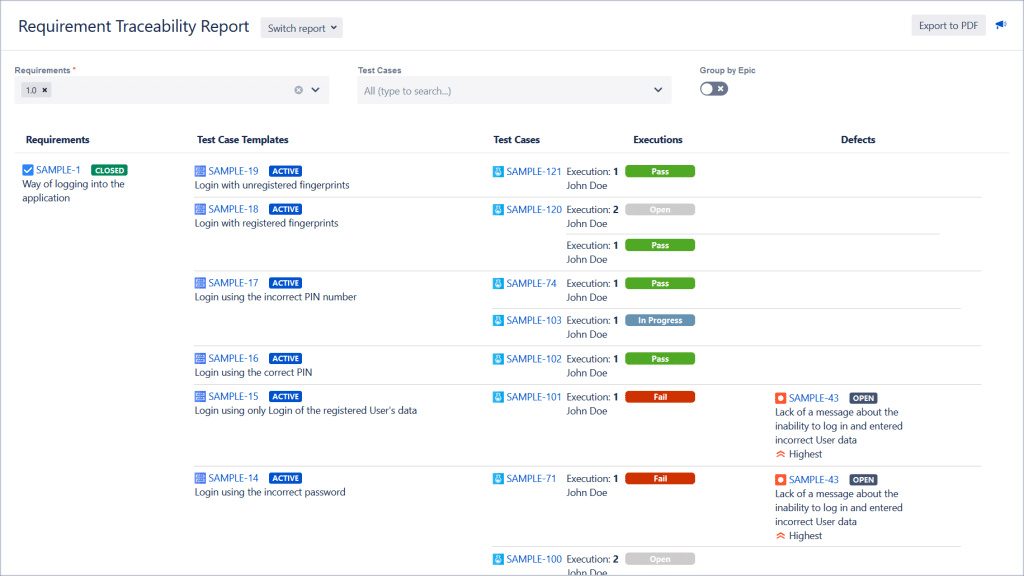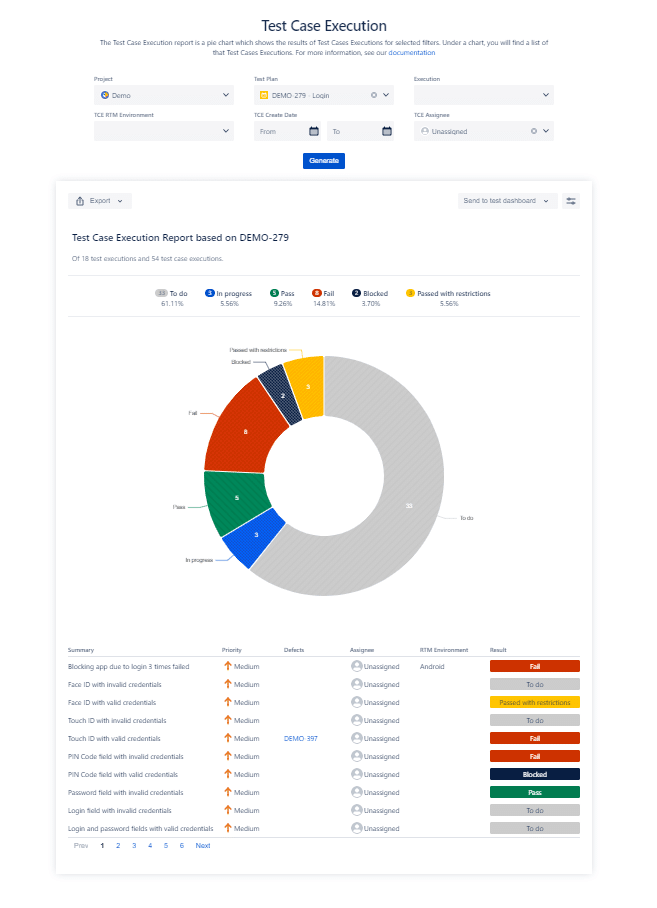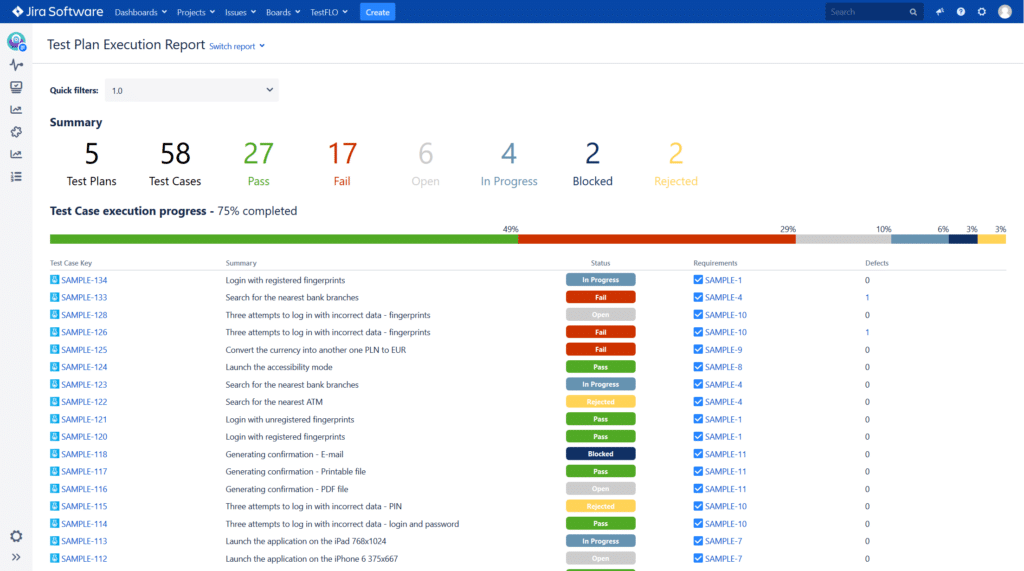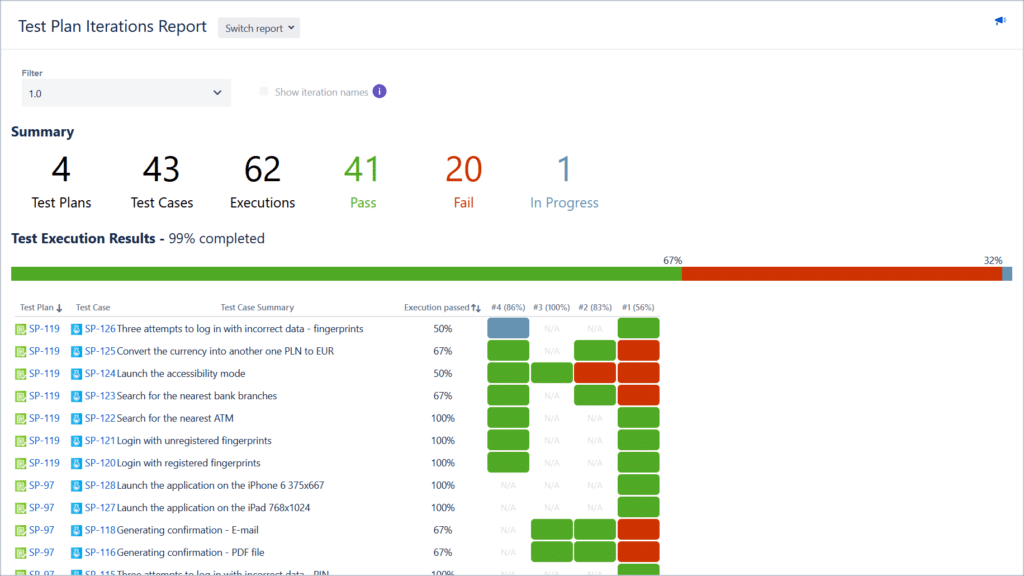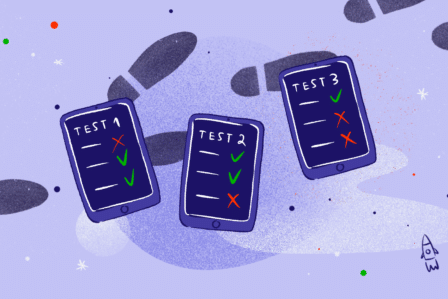How do you write good test reports for software testing? Examples and best practices.
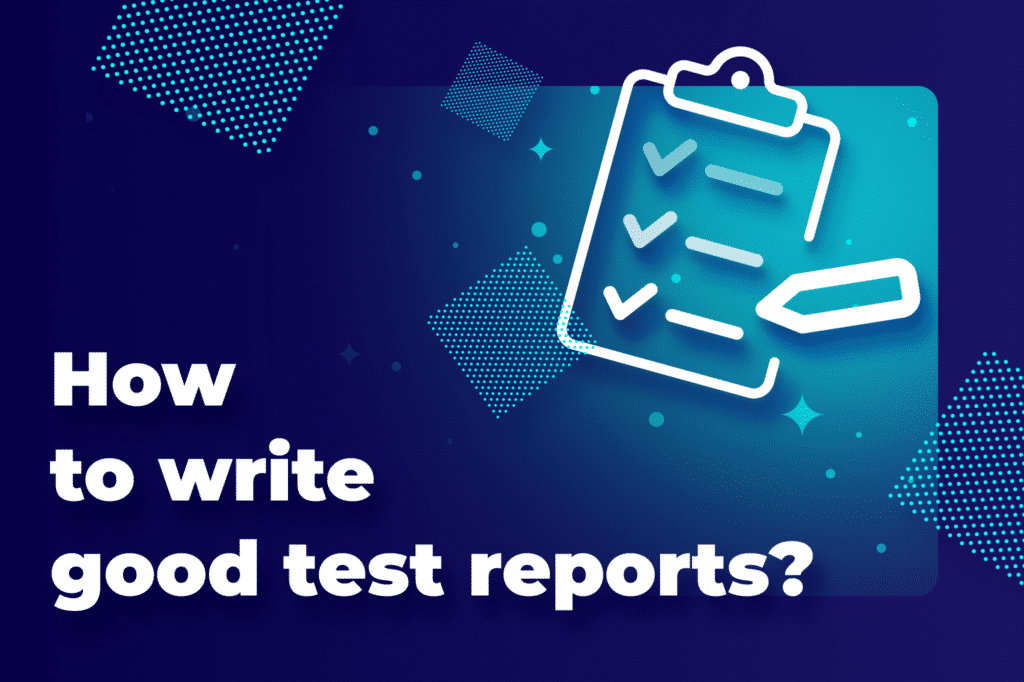
This post was originally published on June 7, 2019, and has been updated for accuracy on February 15, 2024.
Testing consists of multiple related stages. You can’t miss any of them, starting from requirements gathering until reporting the final test results. In this article, we will focus on this very last step. Test reports help teams spot issues early, and make decisions based on facts. Let’s break down how to report tests to keep the software development process running smoothly.
What is a test report?
A test report summarizes the results of testing a software application. It shows how well the software performed during testing. Test reports include details about the test cases’ progress, issues, and product quality. Reporting aims to help with decision-making and keep everyone on the project informed.
Why do we need test reports?
Test reports are important because they show if the software or a product works properly. The testing team tests the product before the release to deliver the best quality from the start. Next, they write a test report to explain if everything went as planned or if there were any problems. However, test reports not only help us know if functionalities are working correctly. They also help track testing progress every step of the way. Thanks to test reporting, managers can spot blockers at a glance and resolve them quickly.
What should a test report contain?
A test report should have 4 key pieces of information to be helpful:
Let’s dig into each element on the list:
Project information
Provide specific details such as the name and version of the project. This will help clarify which project your report is about.
Test objective
Clearly state what the goal of the testing was. Explain what you were trying to achieve or verify with the tests.
Test summary
Provide a brief overview of the testing process and results. Highlight key findings and whether the objectives were met. Include platform details and testing approach. Keep it concise but informative.
Pillars of a good test summary report
The essential factors are:
- Be specific. Make sure your test summary report is not too long. Put all the important test result details shortly and clearly.
- Keep up with the standards. Use a standardized template for your test summary report. This makes it intuitive for people to read.
- Be clear. The information in the report should be easy to understand. Keep it simple.
- Provide details. Share all necessary information about the testing but make sure it’s not too complicated. We want stakeholders to get a complete but still transparent picture.
What are the two types of test summary reports?
Progress Test Summary Report
This report is created during the testing process, usually at specific milestones. It provides a snapshot of the progress, key findings, and mid-term results. It helps stakeholders stay informed about the ongoing testing activities.
Final Test Summary Report
This type is generated at the end of the testing process. It summarizes the overall testing effort. The report includes a comprehensive overview of the testing objectives and the methodologies used. It also covers the results obtained and any issues identified. The final test summary report can provide recommendations for future actions. It communicates the outcomes of the entire testing cycle.
Defect report
List any issues or defects discovered during testing. Include details about each defect, such as its severity and steps to reproduce. This helps in understanding what went wrong and needs attention.
Exemplary test reports template
The basic template for a test report in table format might look like this:
| Section | Details |
| Project Name | My Awesome Project |
| Version | v 1.0.0 |
| Build number | 12345 |
| Test Date | 2024-02-05 |
| Overall Objective | Verify core functionalities of the login system. |
| Specific Objectives | – User login with valid credentials. – Password reset functionality. – Error handling for invalid inputs. |
| Total Test Cases | 15 |
| Passed | 12 |
| Failed | 3 |
| Defects Logged | 2 |
| Pass Rate | 80% |
| Defect ID | DEFECT-1 |
| Description | Login fails for users with special characters in their usernames. |
| Severity | High |
| Priority | High |
| Steps to reproduce | … (steps listed here) |
| Expected Result | Successful login and access to the dashboard. |
| Actual Result | Login fails with an error message. |
How to write a good test report? 10 test reports best practices.
Here are 10 pieces of advice for creating effective test reports:
- Define clear goals
Outline the objectives of your testing. Make sure the purpose of the test report is transparent and specific.
- Maintain a consistent format
Keep a standardized format for all your test reports. This includes headings, sections, and terminology.
- Tailor to your audience
Customize the technical details in your report to match your audience’s understanding. Ensure accessibility for both technical and non-technical stakeholders.
- Detail your test cases
Provide detailed information about your test cases, including IDs, descriptions, and expected outcomes. This clarity helps in understanding the testing process.
- Present comprehensive results
Display testing results, covering both successful executions and identified issues. Use a structured format for clarity.
- Highlight defect details
Describe defects with details such as IDs, severity levels, and steps to reproduce.
- Use visuals
Make your reports easy on the eye with test case charts or graphs to represent data and trends.
- Include recommendations
Provide clear recommendations for addressing identified issues or improving the software. Guide future actions with valuable insights.
- Deliver reports on time
Prioritize delivering reports timely, right after completing testing activities. Timeliness ensures stakeholders can act on the information promptly.
- Implement version control:
Establish version control, especially in larger projects with multiple testing phases. Ensure everyone works with the latest and most accurate information.
Built-in reporting in Jira
Why should you use Jira for testing? The main benefit is reporting and progress monitoring. Jira with test management apps makes testing easier and transparent for everyone. They speed up the process and maintain quality. Additionally, using Jira for testing allows you to connect requirements, test cases, and defects to Jira issues like Epics, user stories, and Confluence pages. This helps stakeholders understand the context better.
Integrating Jira with test management tools
Requirements and Test Management for Jira (RTM) and TestFLO are two examples of testing apps you can use. Thanks to their integrity with the Atlassian suite, the plugins provide teams with a familiar environment to work in.
Both tools let us gather our requirements, tests, and defects altogether. We can also set up test plans, execute them, and verify our progress every step of the way. By checking if all the requirements are covered with test cases, you ensure that nothing is overlooked. It leads to the release of a comprehensive and functional product.
Our apps’ features allow us to track all possible relations between testing objects. These options prevent bugs, but if they still happen, the team can find and fix them early in development, before they impact the project.
Requirements coverage reports
The Requirements Coverage report in RTM allows us to check if all the requirements are covered by testing objects. We can filter the results in the report to easily find requirements that have too many defects.
The Requirement Test Coverage in TestFLO helps us check if all requirements have test coverage. You can access the feature by choosing Jira issues from the project you want to consider as requirements. You can also filter requirements using built-in or saved filters in Jira.
Traceability report
The Traceability Matrix in RTM shows the connections between different issue types. It uses a many-to-many relationship comparison. You can customize the data shown on the X and Y axes using JQL. This allows for more advanced filtering if needed. With JQL custom functions, you can see connections from multiple testing and development projects. The Traceability report shows the total number and types of connections for each issue.
TestFLO’s Requirement Traceability Report helps analyze requirements relations in a specific version. To access the report, choose Jira issues from the project that are considered requirements. You can export the report as a PDF file.
Test execution progress
Requirements and Test Management for Jira (RTM) allows us to track the progress with the dedicated Test Case Execution report. The chart presents all the TCE’s statuses. Below, we’ll find the table with each test case and its result, possible defects, and other important elements. As in the case of the Traceability and the Requirements Coverage reports, we can export the final document to a .csv file.
Test Plan Execution Report in TestFLO shows the overall progress of test plans. Depending on the needs of granularity, we can check the progress based on the test cases’ status or test steps’ progress.
Test progress report
The Test Execution report in RTM shows the overall testing progress and test case statuses. It has the form of a column chart. The table provides detailed information if necessary. The feature estimates the remaining time for the testing process to finish. The report lets us select which Test Executions we want to see, helping us identify connections with improvements.
Test plan iterations report
The Test Plan Iterations Report in TestFLO shows all executions from the selected plan. With this report, we can easily analyze the actual state of each test case in a given iteration. The report consists of two sections: summary and test execution results.
Each row in the report presents one test case and its execution in a given iteration of the test plan. Cells represent the status color of the test case execution in the given iteration. If the given iteration doesn’t include a specific case, the report won’t display the status color. Instead, the N/A will appear in its place.
Last but not least… the Test Dashboard
RTM for Jira enables us to display all our Test Execution and Test Case Execution reports on a single screen. It’s possible through the Test Dashboard feature. Collecting the graphs makes your testing more clear. It helps you quickly answer questions from customers or team members.
As TestFLO doesn’t have a built-in dashboard, we can still collect relevant information with the usage of TestFLO’s Test Plan Iteration Gadget. It shows the Test Plan Iterations Report and can be displayed in the Confluence as well. Test managers, testers, and other stakeholders who don’t have access to Jira can use this gadget to see test progress.
Key takeaway
For your customers and stakeholders, reporting is crucial. That’s why it’s so important to keep track of every change and be extremely careful about the details. As testing consists of many stages, having everything under control isn’t always easy. For that reason, bringing the whole software development process into Jira integrated with RTM or TestFLO is a smart way to go. With the support of dedicated reporting features, it won’t cost so much time and money to summarize tests anymore. Now, you can perform step-by-step analysis with just a few clicks.
Frequently Asked Questions
-
What is a final test report?
A final test report is a document you make at the end of the testing. It wraps up everything the team found during the testing process. It includes informing the stakeholders about what was supposed to be done, how it was done, what worked, and what needs fixing.
-
How often should you design test reports during a project?
Teams design test reports at different project stages, like after testing a new feature or completing a phase. So, it depends on the project timeline.
-
What common challenges are faced when creating test reports? How can they be overcome?
Challenges include too much detail or unclear information. Prevent them by keeping reports clear, concise, and focused on key points.
-
Are there industry standards for structuring test reports?
Industry standards for test reports require consistency, clarity, and relevance. You can find more detailed information on this topic in the best practices section of the article.
-
What are the examples of successful outcomes from test reports?
Effective use of test reports can lead to fewer issues in the final product. It can also result in better user experiences and higher confidence in the software.
